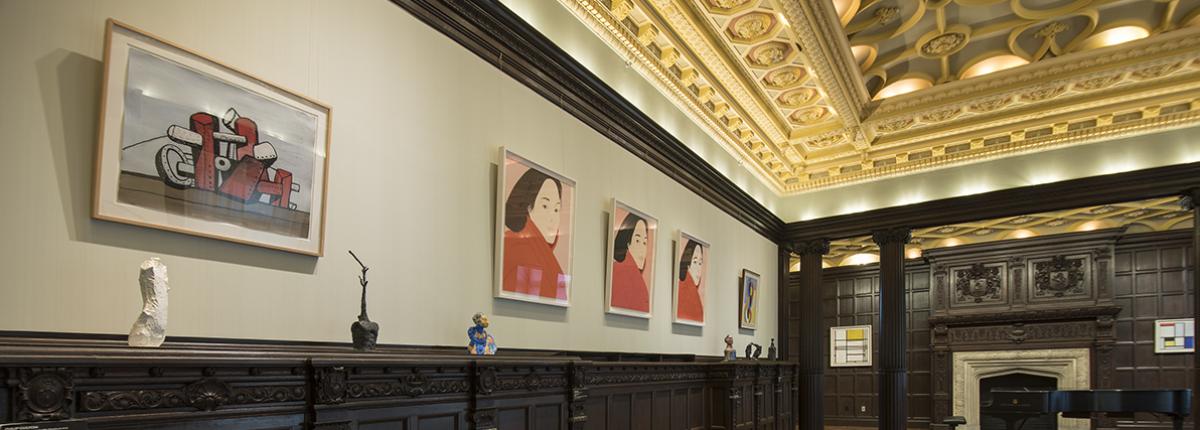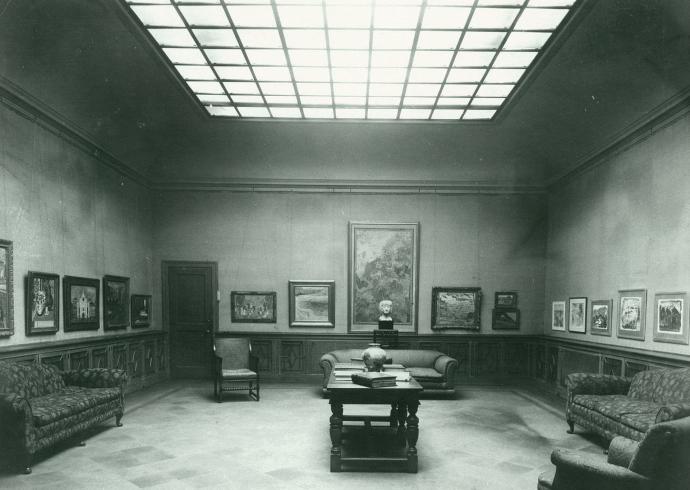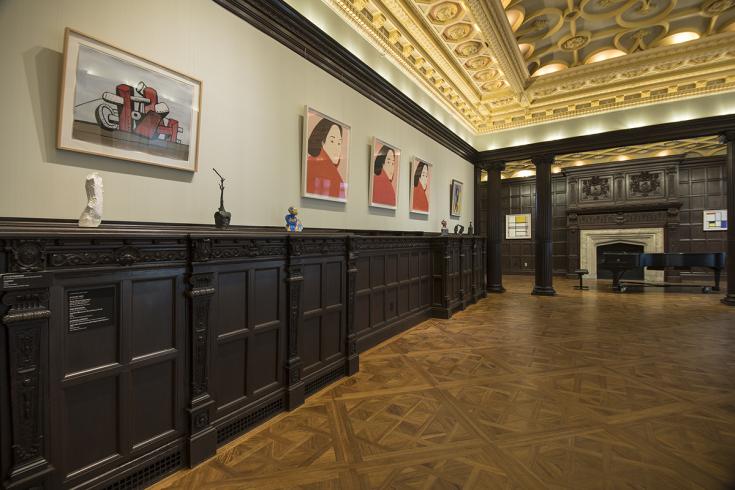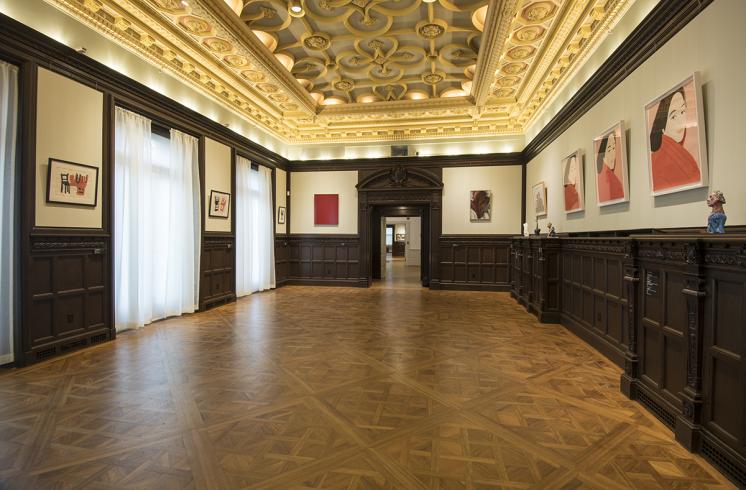Congenial Spirits
“I bring together congenial spirits among the artists from different parts of the world and from different periods of time.”
Duncan Phillips, 1926
Duncan Phillips believed that art is a universal language that can create bonds of fellowship between peoples of different countries and cultures through engagement with great art by artists who provoke us to see the world with new eyes.
Every installation and exhibition at the Phillips was conceived as a conversation between the art and the artists speaking to each other across time, geography, and nationality, the past speaking to the present and vice versa—a revolutionary approach in the 1920s. Duncan Phillips never sought to establish a comprehensive survey of styles or movements. Rather, he looked for what he called “rivers of artistic purpose,” envisioning his museum as a place where the pictures would be allowed to speak for themselves. As he stated often in his writings beginning in 1926, the museum was his best effort to be a “beneficent force in the community where I live” because “art is part of the social purpose of the world” and “a gallery can be a meeting place of many minds, harmonized by a genuine respect for the spirit of art.”
The Phillips follows this practice of creating “visual conversations” in the galleries by frequently rotating the works from the permanent collection into new arrangements, ensuring that visitors enjoy fresh experiences on every visit to the Phillips.
Main Gallery, 1927
A dynamic early example is the 1927 Main Gallery installation that featured contemporary French painting opposite a wall of watercolors by John Marin with works by Maurice Prendergast, John Henry Twachtman, Augustus Tack, Paul Cézanne and an 18th-dynasty Egyptian limestone head on the wall between them. Phillips knew he had done something unlike any other museum, writing to Alfred Barr (the soon to be director of the Museum of Modern Art) about how he was planning to “give Washington a bracing shock” with this installation of Marin watercolors that he believed were so exciting and unlike anything seen in the nation’s capital to date. He wrote to artist John Graham in Baltimore about this installation, encouraging him to come to the museum and bring his friends to see the Marins and the “French Moderns.” In a letter to the New York Herald Tribune on February 10, 1927, Phillips challenged the Metropolitan Museum of Art to follow his lead as he believed an institution like the Met should set an example by setting aside a space, a curator, and a small purchase fund to “experiment with vital works of art.”
Music Room, 2018
A 2018 Music Room installation followed suit, featuring some more recent acquisitions alongside old(er) favorites. The color red emerged as a guiding theme, allowing the curators to create some interesting conversations about color, form, and narrative between modern and contemporary art. Joseph Marioni’s Crimson Painting, with its highly-saturated, monochromatic, luminous surface, conveys sensation over information and is narrative-free, focusing solely on the exploration and advancement of color and light. The color red, at its most intense and pure, appears to almost drip off the canvas onto the walls. Contrast this painting with Piet Mondrian’s Composition No. 9 with Yellow and Red, to the right of the fireplace across the room from the Marioni, with its carefully orchestrated yet lively rhythm punctuated by primary colors. Whereas Marioni’s work echoes the emotional experience music provides, Mondrian’s pays homage to the rhythm and melody carefully composed in each music piece performed in the music room. On the west wall, you’ll find Alex Katz’s Brisk Day I-III, 1990, with its repeated subject looking over her shoulder not only at the viewer, but also across the room at selections from Georg Baselitz’s La sedia di Paolo, 1988. Again, the visitor will likely pick up on the vibrant reds in both groupings, but there’s more to their inclusion. In the Katz lithographs, like the Mondrian and Marioni paintings, the subject matter is secondary to the formal properties (color, light) of the series.


